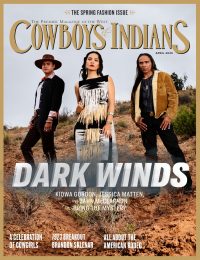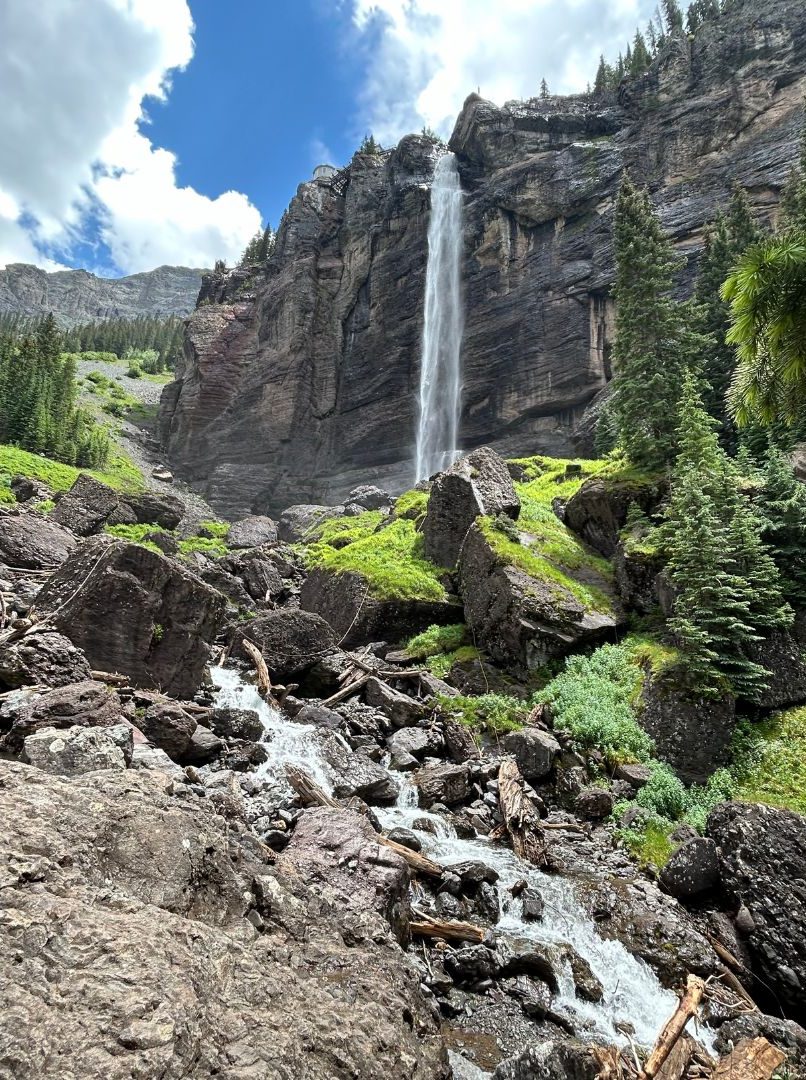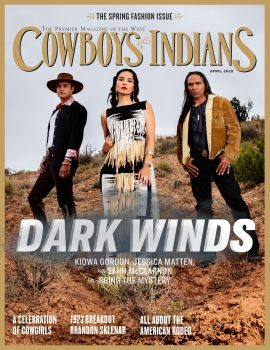Experience history and healing along the well-worn paths of Telluride, Colorado.
This summer, I visited Telluride for the fifth time. And on this trip, like on every trip before it, I unexpectedly bumped into old friends. Telluride is a tiny town, and a very difficult one to get to from the deep South, where I live. But the well-worn path westward that has been part of our nation’s history is hopping and popping as much now as ever. When I consider why Southerners go to great lengths to make their way to this old box canyon, I think the answer is found in the layered history of the people of Telluride’s past. In the echo of their stories, we find the reverberation of our own.
Beauty and the Bride
This area — like most of North America — was originally settled by the Ute and Uncompahgre Indian tribes. They were the very first to testify to the wild and wondrous beauty of the cozy, three-sided canyon, calling it “Valley of Hanging Waterfalls.” Those waters are still falling — to this day. While we have our own stunning falls all over the South, there’s a particular delight to be found in leaving the Rocky Mountain town of Telluride on foot and hiking directly up the back side of the canyon, engaging all four limbs to hoist and clutch and jump and climb up the skinny path until we reach our worthy reward: Bridal Veil Falls. It was the felicity of the landscape that called out to our Native American forebears, and it is that very same beauty that beckons eastward to those of us who live most of our lives in the deep South.
Butch and the Bank
We are not the first to go West, however. During the boom of the mid-1800s, John Fallon made the first claim at the Sheridan Mine, proving the area to be rich in zinc, lead, copper, iron, silver, and gold. Word spread fast and the town of Telluride took root. On June 24, 1889, Butch Cassidy made history by committing his first official crime, robbing the San Miguel Valley Bank, in Telluride. He got away with $24,580, and that was the birth of his legendary story.
We Southerners have a great many legends that hail from our hometowns, many of them still hanging around, drinking coffee, and writing books. But there’s nothing like tales from the old West. On the breeze of these Colorado mountains, you can almost hear echoes of horses hooves galloping away as Butch and his Wild Bunch escape the law for the first time ever. There’s something of that reckless abandon that calls to our more traditional, buttoned-up Southern souls and begs us to run wild and free, just like Butch Cassidy and the Sundance Kid.
Bill and the Box
A century after Cassidy had come and gone, Telluride native Bill Mahoney began planning and developing Telluride as a ski town. Taking it a new direction caused the mining families to kindly see their way out, and in their place, the hippies made themselves right at home. These counter-cultural folks enjoyed the outdoor living the box canyon offered with kayaking, gliding, and climbing. In a twist of irony, this fresh batch of young people housed their own version of the same rebel spirit that had drawn Butch Cassidy to Telluride a hundred years earlier. And in another fresh twist, it’s the same rebel spirit that beckons Southerners to this tiny town even now, despite the challenge of the journey. As a matter of fact, it may well be that very challenge that calls to us the loudest. Whether we are daredevil-ish enough to fly in and land on that Lilliputian landing strip or whether we drive across the country for two whole days to get to that old town of Telluride, there is the echo of a whisper in the recesses of our American spirit that still nudges us to Go West, Young Man. And in the Deep South, we stand ready to answer.
PHOTOGRAPHY: Candace Echols


















